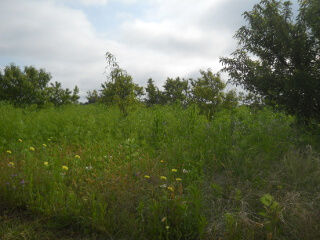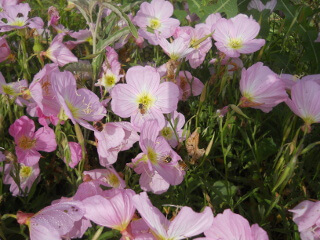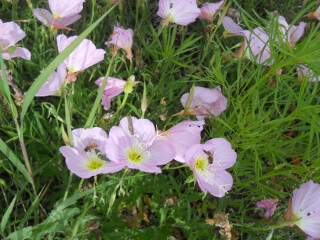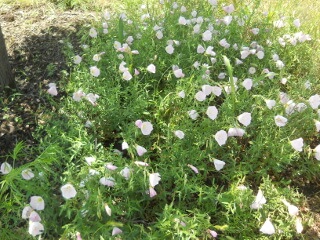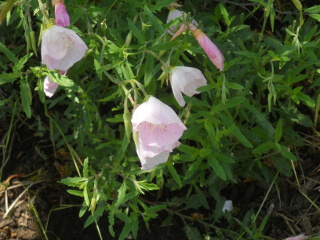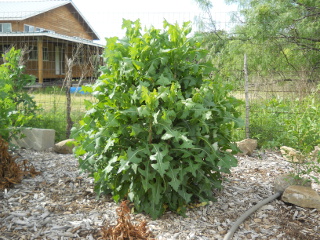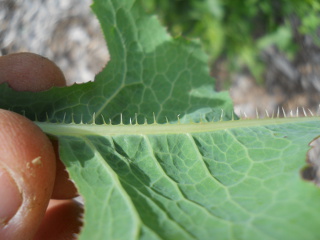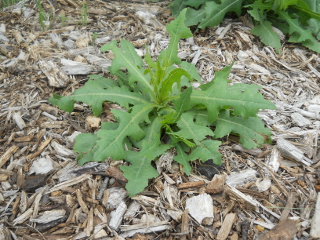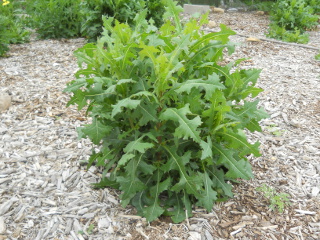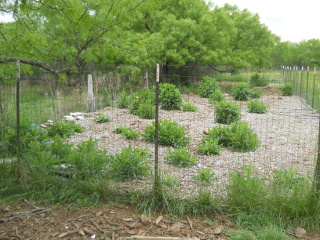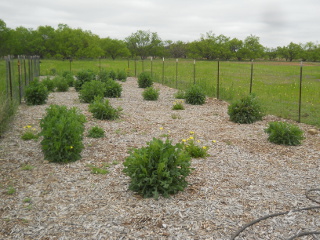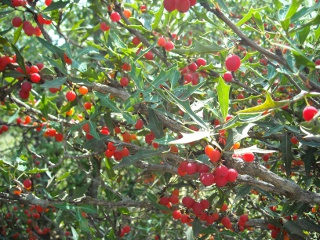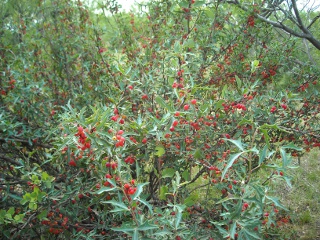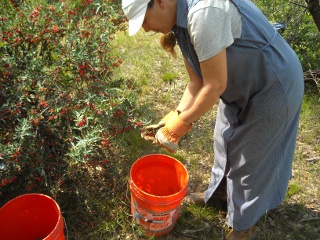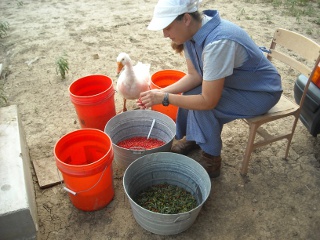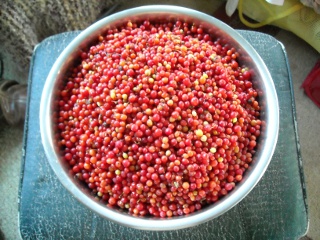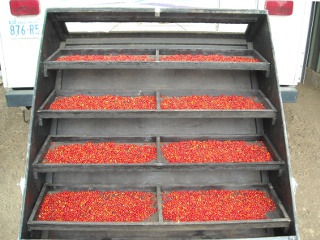While our work for our provision requires the sweat of our faces (Gen 3:19), in God’s glorious creation and graciousness, He has provided some things to just grow naturally as edible for humans. We here are always looking out for those kind provisions, and we’ve talked some about them in other perennial blog posts, and so we have another one we have discovered on the land — Pink Primrose.
Recently I was mowing the orchard area. With the gracious rains the Lord has brought this Spring, this is what I was mowing down…many of the weeds half the height of many of the trees!
… and during the mowing, I came upon a pink primrose patch that the honeybees were making great use of, and so as to not take away their food supply (we do whatever we can here to help the valuable honeybee!), I left the patch. If you look closely, you can see some of the bees busy working:
We had learned about pink primrose in the past, but I thought now would be a good time to do this blog post. Here’s a patch of them:
And this one shows the leaves well:
And here is Foraging Texas’ article on pink primrose. You can eat the leaves before flowering, and you can even eat the flower petals! The plants apparently provide vitamin F and some fatty acids. You just have to be careful about how much of it you eat, although the leaves are pretty small, so it takes a bit of work to collect much of it anyway.
But, once again, we are thankful for this free gift from God in graciously granting something He is singly growing for us!
— David
